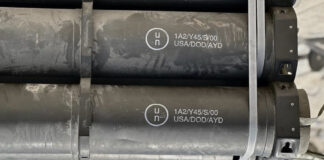
By Joseph Mercola,
When it comes to cancer, you probably want to do what you can to avoid it. But how do you do that when it seems like everything around you poses a cancer risk?
Here are seven important steps to removing the most pressing cancer risks from your home. They include checking for and removing: radon, nonstick-coated pots and pans, makeup and personal care products with toxic ingredients, BPA-lined cans and bottles, cleaning products and air fresheners, toxic building materials, furnishings and household cleaning supplies, as well as common pesticides and weed killers.
1. Check Your Home for Radon
Radon is an odorless, colorless gas that is formed from the natural breakdown of uranium in the earth. Though you can’t see it or smell it, radon can enter your home through cracks in your foundation, well water, building materials and other sources, where it can contaminate the air you breathe.
Because radon is radioactive, it’s also carcinogenic; radon exposure is the second leading cause of lung cancer in the United States, second only to smoking.
Any home, whether new or old, with a basement or without, well-insulated or drafty, can have a radon problem; the EPA estimates that nearly 1 out of every 15 homes has elevated levels. Radon is measured in “picocuries per liter of air,” or “pCi/L.” Outdoor air generally has radon levels of about 0.4 pCi/L, whereas the average radon level indoors is estimated to be about 1.3 pCi/L. While the U.S. Congress has set a long-term goal stating that indoor radon levels should be no higher than outdoor levels, the EPA recommends taking action only if your home’s levels exceed 4 pCi/L.
This does not necessarily mean that 4 pCi/L is “safe,” however, as there really is NO safe level for radiation. Even the EPA admits that lower levels can still pose a health risk, and you may want to take precautions to further reduce the amount of radon in your indoor space even if it’s at or below 4 pCi/L.
Radon Testing and Remediation
Fortunately, testing your home for radon is simple, and if levels are elevated there are ways to reduce them to protect your health. There are a number of resources for test kits:
- If you’d like a certified technician to measure the radon levels in your home or other indoor environment, you can contact the American Association of Radon Scientists and Technologists.1 Testing costs from $100 to $300.
- You can also obtain information on certified technicians and do-it-yourself testing from the EPA.2 State and regional information can be found there.
- The National Radon Program Services at Kansas State University offers discounted test kits available to purchase online.3
- Other do-it-yourself test kits for radon run between $20 and $30 and can be purchased online and at your local hardware store.
If your home has elevated radon levels, it’s important to find a qualified radon service professional to fix your home immediately. Some U.S. states maintain lists of contractors that have met certain qualifications for radon mitigation; your state radon coordinator will have this information.4 There are also two privately run national radon programs that can help you find a qualified radon service professional:
- The National Environmental Health Association (NEHA)5
- The National Radon Safety Board (NRSB)6
Finally, Kansas State University maintains national radon hotlines:
- National Radon Hotline: Purchase radon test kits by phone.
1-800-SOS-RADON (767-7236) - National Radon Helpline: Get live help for your radon questions.
1-800-55RADON (557-2366) - National Radon Fix-It Line: For general information on fixing or reducing the radon level in your home.
(800) 644-6999
The cost of radon reduction measures depends on the size and design of your home and the specific methods needed. Costs range from $800 to $2,500, with an average cost of $1,200. Radon reduction systems may be able to reduce your home’s radon levels by 99 percent. There are a variety of ways to reduce radon levels in your home, including:
- Sealing cracks in floors and walls
- Increasing ventilation through sub-slab depressurization with pipes and fans
- Removing granite countertops if they are emitting high levels of radon
- Replacing ionization smoke detectors with the photoelectric type
2. Replace Non-Stick Cookware and Avoid Stain-Resistant Fabrics
About 70 percent of cookware sold in the United States contains a non-stick coating that contains PFOA (perfluorooctanoic acid) and other perfluorinated compounds (PFCs), which are used to make grease-resistant food packaging and stain-resistant clothing as well. Even though there are many names, if the item in question is “non-stick” or “stain/grease resistant,” it will have some type of fluoride-impregnated coating that is best avoided.
Remember that non-stick cookware is perfectly safe to have in your home as long as you decide never to heat the pan. At room temperature there is virtually no release of fluoride into the air. But of course the purpose of non-stick cookware is to heat it and cook food, and that is when you run into problems.
It’s well documented that when non-stick pans are heated the coating begins breaking down, releasing toxins into the air in your kitchen. When the pan reaches 680 degrees F (which takes about three to five minutes of heating), at least six toxic gases are released. At 1,000 degrees F, the coatings on your cookware break down into a chemical warfare agent known as PFIB.
Research has revealed that these toxins can accumulate in your blood at an alarming rate and may lead to chronic disease over time. You can keep your exposure as low as possible by avoiding (or getting rid of) products that contain PFCs. This includes:
| Non-stick cookware (choose either ceramic or glass instead) | Microwave popcorn | Packaging for greasy foods (including paper and cardboard packaging) |
| Stain-proof clothing | Flame retardants and products that contain them | Stain-resistant carpeting, and fabric stain protectors |
3. Clean Up Your Beauty Regimen
Women who use make-up on a daily basis can absorb almost five pounds of chemicals into their bodies each year, so this is not a matter to take lightly. Putting chemicals on your skin is actually far worse than ingesting them, because when you eat something the enzymes in your saliva and stomach help break it down and flush it out of your body. When you put these chemicals on your skin however, they’re absorbed straight into your blood stream without filtering of any kind, so the toxic chemicals from toiletries and beauty products are largely going directly to your internal organs.
There are literally thousands of chemicals used in personal care products, and only a tiny fraction of them have ever been tested for safety. According to the National Institute of Occupational Safety and Health, nearly 900 of the chemicals used in cosmetics are known to be toxic. It’s impossible to list them all, but some of the most common culprits to avoid include:
| Sodium lauryl sulfate (SLS) | Musks | Mercury |
| Paraben | 1,4-Dioxane | Lead |
| Phthalates, including dibutyl phthalate (DBP), dimethyl phthalate (DMP), and diethyl phthalate (DEP) | Mineral Oil, Paraffin, and Petrolatum | Nano particles |
| Antibacterials | Hydroquinone | Formaldehyde |
Please note that in order to avoid formaldehyde and 1,4-dioxane, you need to know what to look for as they’re typically NOT listed on the label; at least not in those words.
| Common ingredients likely to contaminate products with formaldehyde include: | To avoid 1,4-dioxane, watch out for these ingredients, which create 1,4-dioxane as a byproduct: |
| Quaternium-15 | PEG-100 stearate |
| DMDM hydantoin | Sodium laureth sulfate |
| Imidazolidinyl urea | Sodium myreth sulfate |
| Diazolidinyl urea | Polyethylene |
| Ceteareth-20 |
Fortunately, there are more natural cosmetics available today than in years past. When it comes to personal care products, I like to use this rule — If you can’t eat it, don’t put it on your body. Ideally, you’ll want to look for the USDA’s verified Organic seal. I also highly recommend using the Environmental Working Group’s Skin Deep Cosmetic Safety Database7 where you can look up a wide variety of products and brands to find out what they’re really made of, and whether or not they’re safe.
4. Avoid Canned Foods and Plastic Containers
Bisphenol A (BPA) is a widely used component of plastic containers and food packaging, such as the inner lining of cans, despite the fact that more than 200 research studies show BPA is harmful to human health. The use of BPA is so pervasive that scientists have found that 95 percent of people tested have dangerous levels of BPA in their bodies.
Avoiding canned foods is perhaps your best way to avoid BPA. Recent research from the Harvard School of Public Health8 revealed that canned foods and beverages can increase your BPA levels by a staggering 1,000 percent in a mere five days! The lead researcher noted that given this new finding, canned goods may be an even greater contribution to your BPA levels than plastics.
Interestingly, research has shown that you can help protect yourself from the adverse effects of inevitable BPA exposure by eating traditionally fermented foods, such as raw grass-fed organic kefir, fermented veggies, or taking a high-quality probiotic supplement. These foods contain “friendly bacteria,” some of which have the ability to break down BPA, as well as reduce your intestinal absorption of it.9 Naturally, avoiding sources of BPA is your best bet. Here are 10 tips to help reduce your exposure to BPA around the house:
| Only use glass baby bottles and dishes for your baby | Use glass, ceramic, or stainless steel travel coffee mugs rather than plastic or Styrofoam coffee cups |
| Get rid of your plastic dishes and cups, and replace them with glass varieties | Avoid using plastic wrap (and never microwave anything covered in it) |
| Give your baby natural fabric toys instead of plastic ones | If you opt to use plastic kitchenware, at least get rid of the older, scratched-up varieties, avoid putting them in the dishwasher, and don’t wash them with harsh detergents, as these things can cause more chemicals to leach into your food |
| Store your food and beverages in glass containers | Avoid using bottled water; filter your own using a reverse osmosis filter instead |
| IF you choose to use a microwave, don’t microwave food in a plastic container | Before allowing a dental sealant to be applied to your, or your children’s, teeth, ask your dentist to verify that it does not contain BPA |
In the event that you do opt to use plastic containers for your food or beverages, be sure to avoid those marked on the bottom with the recycling label No. 7, as these varieties may contain BPA. Containers marked with the recycling labels No. 1, No. 2, and No. 4 do not contain BPA (however they may contain other unsavory chemicals that you’re best off avoiding by using glass instead).
5. Clean Out Your Cleaning Products
Research has found that breast-cancer risk is twice as high among women who report the most use of cleaning products and air fresheners, compared to those who rarely use such products. While it is very difficult to prove that a person’s exposure to household cleaners over the course of 10, 20 or 30 years is what caused their cancer diagnosis, it is well known that commonly used household chemicals do, in fact, cause cancer, along with other serious health effects like reproductive and developmental problems in developing children.
Mold and mildew cleaners and air fresheners have shown the greatest correlation with breast cancer. Some of the chemicals of greatest concern that you’ll want to avoid include:
| Synthetic musks | Phthalates | 1,4-diclorobenzene |
| Terpenes | Benzene | Styrene |
| Phenol | Nonylphenol ethoxylates (NPEs) | Formaldehyde |
| Petroleum solvents | Butyl cellosolve | Triclosan (antibacterial) |
My top list of cancer prevention strategies has always included reducing your exposure to environmental toxins like pesticides, household chemical cleaners, and synthetic air fresheners. Fortunately, this is a relatively easy task to accomplish.
For those times when you need to do a bit of cleansing, one of the best non-toxic disinfectants is plain soap and water. You can use this for washing your hands, your body and for other household cleaning. Another all-purpose cleaner that works great for kitchen counters, cutting boards and bathrooms is 3% hydrogen peroxide and vinegar. You can also keep your home very fresh and clean by making your own natural cleaning products using items you probably already have around your home. Some more tips for making simple and effective all-natural cleansers:
- Use baking soda mixed with apple cider vinegar to clean drains and bathtubs, or sprinkle baking soda along with a few drops of lavender oil or tea tree oil (which have antibacterial qualities) as a simple scrub for your bathroom or kitchen.
- Vinegar can be used to clean almost anything in your home. Try it mixed with liquid castile soap, essential oils and water to clean floors, windows, bathrooms and kitchens. It can even be used as a natural fabric softener.
- Hydrogen peroxide is safer to use than chlorine bleach for disinfecting and whitening.
- Vodka is a disinfectant that can remove red wine stains, kill wasps and bees and refresh upholstery (put it into a mister and simply spray on the fabric).
For a great video on how to use these ingredients and other tips for cleaning your home without hazardous chemicals, please review the article Clean and Green – Keep a Hygienic House with These Natural, Non-Toxic Cleaning Products. If you really want to use a commercial product, look for one that uses a natural base. To find out about the ingredients in common household products, there’s a searchable database you might find helpful from Environment, Health and Safety Online (EHSO)10.
6. “Green” Your Building Materials and Furnishings
The building materials used in your home can be a major source of toxic exposures of multiple kinds, from formaldehyde emissions from pressed wood products, to VOC’s from carpets and paints, just to name a few. Your furnishings can also harbor toxic chemicals.
While paints have gotten a lot less toxic over the past 25 years, most paints still emit harmful vapors, such as VOC’s, formaldehyde and benzene. These types of fumes can be released daily for about 30 days after application. Low levels can continue to leak into the air for as long as a year afterward, so you’ll want to make sure you ventilate the area repeatedly. Another danger is lead-based paint, which can be found in many homes built before 1978. Once the paint begins to peel away, it releases harmful lead particles that can be inhaled. In 1991, the U.S. government declared lead to be the greatest environmental threat to children.
Fortunately, it’s getting easier to find high-quality non-toxic paints, also known as “low-VOC” or “no-VOC” paint. Both large paint companies and smaller alternative brands now offer selections of such paints. For a list of distributors and manufacturers, check out healthyhomeplans.com11. Also limit or eliminate exposure by carefully selecting non-toxic carpeting, such as those made of wool, or opt for non-toxic flooring like solid wood or bamboo instead. One of the primary hazards when it comes to furnishings is flame retardants: polybrominated diphenyl ethers (PBDEs). These are commonly found in:
- Mattresses
- Upholstery, drapes and curtains
- Television and computer casings and circuit boards
Studies have linked PBDEs to learning and memory problems, lowered sperm counts and poor thyroid functioning in rats and mice. Other animal studies have indicated that PBDEs could be carcinogenic in humans, although that has not yet been confirmed.
Your mattress may be of particular concern, as many contain not only PBDE’s, but also toxic antimony, boric acid, and formaldehyde. Shopping for a safe mattress can be tricky, as manufacturers are not required to label or disclose which chemicals their mattresses contain. However, some manufacturers now offer toxin-free mattresses, such as those made of 100% wool, which is naturally fire resistant. There are also mattresses that use a Kevlar, bullet-proof type of material in lieu of chemicals for fire-proofing. These are available in most major mattress stores, and will help you to avoid some of the toxicity.
7. Eat Organic and Tend Your Garden Without Harmful Chemicals
Many pesticides and herbicides are potentially carcinogenic, and you may be exposed to them either via the foods you buy, or in your own garden.
The US Environmental Protection Agency (EPA) considers 60 percent of herbicides, 90 percent of fungicides, and 30 percent of insecticides to be carcinogenic, and most are also damaging to your nervous system as well. Some of the pesticides/herbicides classified as probable or possible human carcinogens by the US Environmental Protection Agency (EPA) include:
| Chlordane | Heptachlor | Tetrachlorvinphos |
| Carbaryl | Propoxur | Lindane |
| Dichlorvos | Phosmet | Permethrin |
The answer, of course, is to opt for organically-grown produce and organically-raised, pastured animal products, and using organic or non-toxic gardening methods around your own home.
It’s well known that conventionally grown fruits and vegetables are often tainted with unacceptable levels of pesticide residues, but you’re also exposed when you eat animal products. Animals raised in confined animal feeding operations (CAFO’s) eat feed full of pesticides, and these toxins accumulate in their flesh and fat over the course of their lifetimes. When you eat factory-farmed meat, you then ingest these accumulated pesticides.
As for fresh produce, certain fruits and vegetables tend to be far more contaminated than others, simply because they’re more susceptible to various infestations and therefore sprayed more heavily. Some foods are also more “absorbent,” with thin, tender skins.
Such foods would be high on your list for buying organic. The Environmental Working Group (EWG) produces an annual shopper’s guide to pesticides in produce12 that you can download. It lists the produce with the highest and lowest levels of pesticide residue, which can help save you money if you can’t afford to buy everything organic.
Fermented foods can be helpful here as well, as some of the beneficial bacteria produced in fermented foods have been found to help detoxify organophosphorus insecticide. A 2009 study13 showed that during the fermentation of kimchi, the insecticide degraded rapidly until day 3, and had degraded completely by day 9. Four lactic acid bacteria were identified as being responsible for the effect.
Finally, do not use synthetic pesticides in your home or garden, or in the form of insect repellant, lice shampoo, pet sprays or otherwise. There are safe and effective natural alternatives for virtually every pest problem you come across.
For instance, boric acid powder is a very effective deterrent to roaches and ants. Sprinkle some in the inner corners of your cabinets and in the corners under your cabinets. Pests will carry it back to their nests on their feet and kill the remainder of the infestation. Boric acid is non-toxic for animals and only kills the insects. Or, for a homemade garden spray that will discourage most pests, use some mashed garlic paste combined with a little cayenne pepper or horseradish. Add a small amount to a gallon jug of water and let it sit for a day or two, shaking it occasionally. Just spray a small amount onto a few leaves first to make sure it’s not so strong that it will burn them.
For more details on these types of natural solutions to pests of all kinds, I recommend the book Dead Snails Leave No Trails by Nancarrow and Taylor, or visit the website BeyondPesticides.org14. They have a section on do-it-yourself natural solutions to a wide range of pest problems along with a resource to find pest management companies that use non-toxic products.
Want to jumpstart your cancer prevention? If so, we recommend both of Touchstone Essentials’ liquid zeolite products to help detox your body from heavy metals and other cancer-causing toxins. For a limited time, use the code PREPARE10 to save 10% off your first order:
- Pure Body Digest Detox: https://prepareforchange.thegoodinside.com/shop/product/pure-body/
- Pure Body Extra Strength Cellular Detox: https://prepareforchange.thegoodinside.com/shop/product/pure-body-extra-strength/
- 1 The American Association of Radon Scientists and Technologists
- 2 EPA, Where Can I Get a Radon Test Kit?
- 3 Kansas State University National Radon Program Services
- 4 EPA, State Radon Contact Information
- 5 The National Environmental Health Association
- 6 The National Radon Safety Board (NRSB)
- 7 Environmental Working Group’s Skin Deep Cosmetic Safety Database
- 8 JAMA 2011 Nov 23;306(20):2218-2
- 9 Bioscience, Biotechnology and Biochemistry 2008 Jun;72(6):1409-15.
- 10 Environment, Health and Safety Online (EHSO)
- 11 Healthyhomeplans.com
- 12 Environmental Working Group 2012 Shopper’s Guide to Pesticides in Produce
- 13 Journal of Agricultural Food Chemistry March 2009; 57(5): 1882-1889
- 14 BeyondPesticides.org
Source: https://wakeup-world.com
Disclaimer: We at Prepare for Change (PFC) bring you information that is not offered by the mainstream news, and therefore may seem controversial. The opinions, views, statements, and/or information we present are not necessarily promoted, endorsed, espoused, or agreed to by Prepare for Change, its leadership Council, members, those who work with PFC, or those who read its content. However, they are hopefully provocative. Please use discernment! Use logical thinking, your own intuition and your own connection with Source, Spirit and Natural Laws to help you determine what is true and what is not. By sharing information and seeding dialogue, it is our goal to raise consciousness and awareness of higher truths to free us from enslavement of the matrix in this material realm.
 EN
EN FR
FR

























